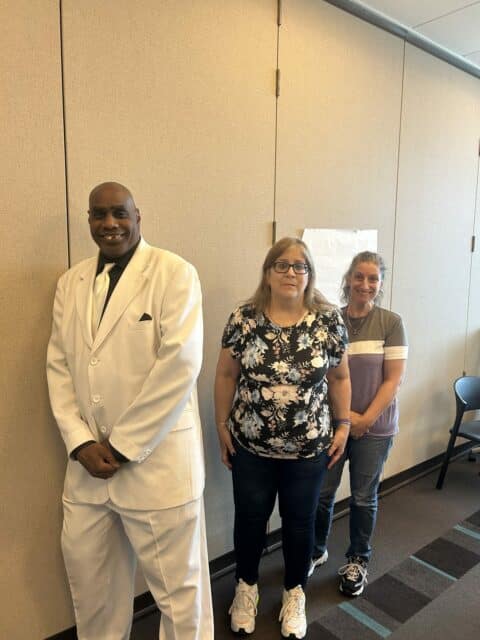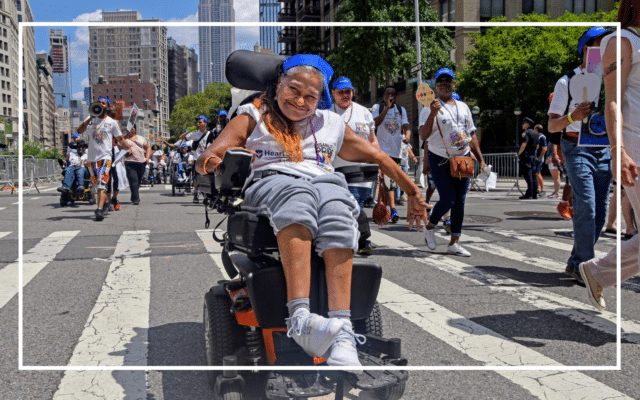News and Events
At HeartShare, we believe in keeping you aware of news and events throughout the agency. Be sure to visit our Events Calendar for important upcoming dates that may be of interest to you.
HeartShare Celebrates 33 Years of the Americans With Disabilities Act
July 26, 2023
Community, Disability Rights
HeartShare Celebrates 33 Years of the Americans With Disabilities Act
July 26, 2023, New York—
This Disability Pride Month, we’re celebrating the 33rd Anniversary of the Americans with Disabilities Act. We’ve come a long way, but as members and allies of the Disability Community, we still have a long way to go.
Education
As we continue to ensure that progress occurs, there are multiple steps we can take to make that happen, starting with education. Having a working knowledge of what’s been going on in the disabled community, the progress made, and the areas that need improvement can get us to a place where we are asking more questions about what needs to happen next.
What people think about when they hear the word disability often affects the way they respond to the disabled community. Understanding two very different models of disability, social and medical, can help us dive deeper.
Medical Model of Disability
The Medical Model looks at a disability as a defect within the individual. Disability appears as a flaw compared to standard traits and characteristics. Solutions lie only with trained medical experts in hopes of shrinking the disability or curing it altogether. This model establishes a looked-down-upon view of the disabled community as we limit our expectations for them. They, in turn, feel less independent and confident in making choices in their own lives.
Social Model of Disability
The social model of disability looks at society’s involvement in creating obstacles for the disabled community and one’s impairment not being accommodated. The solution is then to adjust the environment, not the individual. Removing barriers allows for greater independence and equality for those individuals while erasing the negative stereotypes placed on them in the first place.
Self Advocates
It’s long been said that those closest to the problem are closest to the solution. That is why it is essential to have self-advocates within the community who feel supported and are given ample opportunities to be seen and heard.

(Stanley Brown, Michelle Massa, and Lisa Severino. Members of the HeartShare Self Advocacy Council)
On Wed, July 19th, our organization heard from self-advocates and members of our HeartShare Family, Lisa Severino, Stanley Brown, and Michelle Massa, who shared what disability pride looks like to them and how we can all be better allies.
What is the most important thing you want someone with a disability to know?
“Know how you feel. Know your disability and what you need. What your goals are (in life).”
-Michelle Massa, Member of the HeartShare Self Advocacy Council
What Does Disability Pride mean to you?
“Do good for yourself. Learn from yourself. Speak for yourself. Honor yourself. Do stuff in the community. Be proud of yourself.”
-Stanley Brown, President of the HeartShare Self Advocacy Council
How can people become a better ally to the disability community?
“Know the history of disabilities. Each person with a disability is not the same. We are different. Treat us individually, not the same. Yeah, we have a disability, yeah, we are different, but we don’t bite. Talk to us, treat us like everyone else.”
-Lisa Severino, Member of the HeartShare Self Advocacy Council
Moving Forward
Progress is possible when we allow ourselves to be ever-evolving and ever-learning. That includes seeking information and listening to those whose needs are central to the solutions. Let’s work together to reframe our thinking and do what we can to create a less ableist society.
You can help us continue striving for progress with one of the many ways to get involved at HeartShare Human Services:
Sign up for our newsletter at the bottom of the page.
Article Resources: American Psychological Association, University of California-San Francisco,
Share
Website Footer
 Donate
Donate
Sign up for our newsletter

Click this logo to support HeartShare every time you shop at Amazon. For all eligible purchases, the AmazonSmile program donates 0.5 percent of the price to HeartShare.
Website by Manoverboard Inc.


